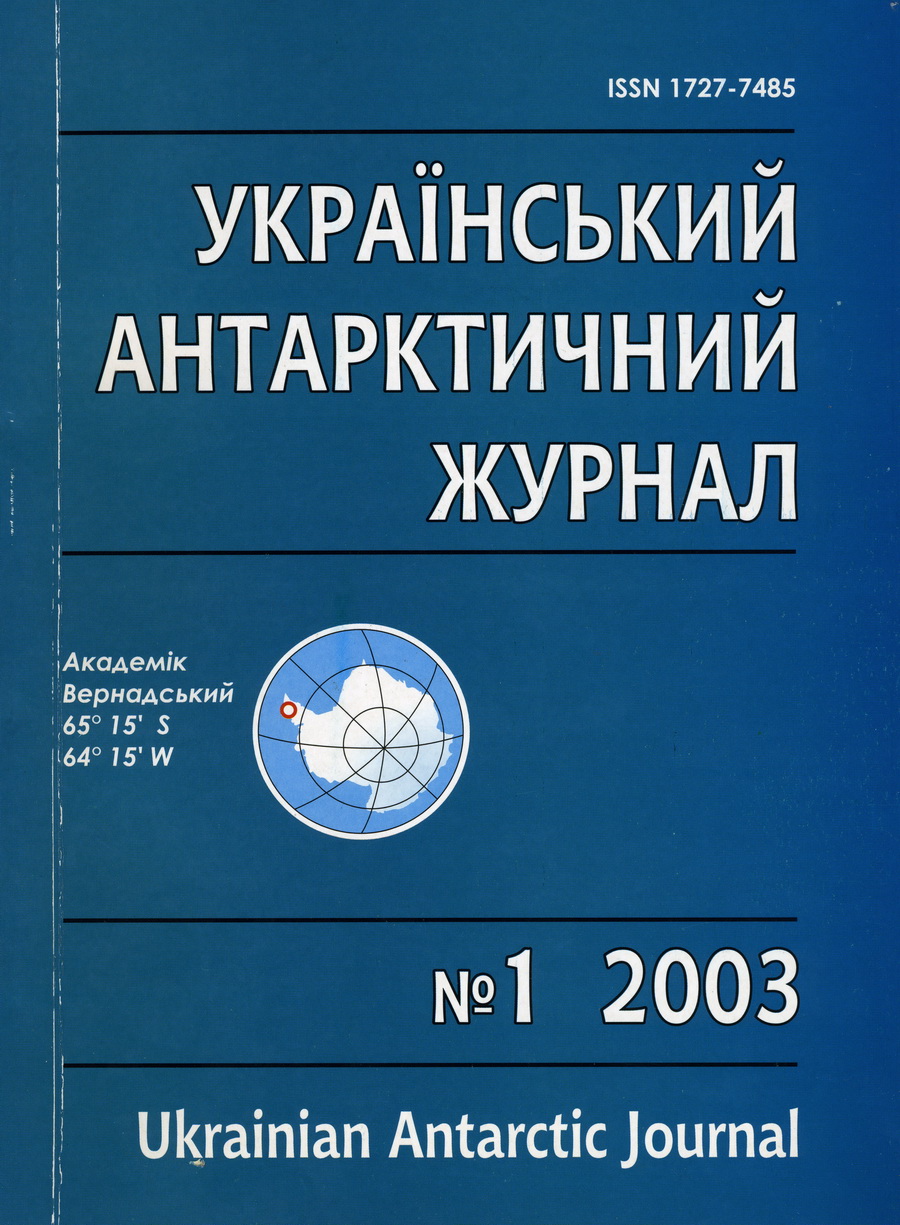Анотація
Під час робіт за програмою 7-ої Української антарктичної експедиції (9.03-19.03 2002 р.) було досліджено хімічний склад тіла Salpa thompsoni Foxton – найбільш масового виду сальп Південного океану. При середньому вмісті органічної речовини в її складі 3,92 ± 1,12 мг/г, у цього виду відмічено перевагу білку (56,6%), субдомінування вуглецю (22,6%), меншу кількість ліпідів (11,5%) и амінокислот (9,3%). Розрахований вміст вуглецю у тілі сальп склав 2,02 ± 0,57 мг/г. В ліпідах переважали структурні фракції, доля триацилгліцеринів і воску в сумі не перевищувала 36%. Вміст органічної речовини та її компонентів зменшувався при збільшенні маси тіла сальп. Частка резервних ліпідів була вищою у великих особин. Варіабельність за складом вуглецю і резервних ліпідів у Salpa thompsoni могла спричинятись неоднорідністю умов проживання, яке особливо проявляється в забезпеченні особин їжею.
Посилання
- Kopytov, Yu.P. (1983). Novyi variant tonkosloinoi hromatografii lipidov i uglevodov [A new version of thin-layer chromatography of lipids and carbohydrates]. Ekologiia moria, 17, 76-80. (In Russian)
- Kuz'menko, M.I. (1975). Opredelenie aminnogo azota ningidrinovym reaktivom novogo sostava [Determining the amine nitrogen using ninhydrin reagent of a new composition]. Metody fiziologo-biohimicheskogo issladovaniia vodorosley v gidrobiologicheskoi praktike. Kyiv, Naukova dumka. 116-118. (In Russian)
- Minkina, N.I. (2000). Intensivnost obmena Salpa thompsoni Foxton [Intensity of the metabolism of Salpa thompsoni Foxton]. Bulleten UAC, 3, 241-245. (In Russian)
- Samyshev, E.Z. (2000). Salpy v AChA: sostav, obilie, raspredelenie [Salps in AChA: composition, amount, distribution]. Bulleten UAC, 3, 237-240. (In Russian)
- Alcaraz, M., Saiz, E., Fernandez, J.A. et al. (1998). Antarctic zooplankton metabolism: Carbon requirements and ammonium excretion of salps and crustacean zooplankton in the vicinity of the Bransfield Strait during January 1994. J. Mar. Sys., 17(1-4), 347-359.
- Amenta, J.S. (1964). A rapid chemical method for quantification of lipids separated by thinlayer chromatography. J. Lipid Res., 5(3), 270-273.
- Clarke, A., Holmes, L.J., & Gore, D.J. (1992). Proximate and elemental composition of gelatinous zooplankton from the Southern Ocean. J. Exp. Mar. Biol. Ecol., 155, 55-68.
- Curl, H. (1962). Standing crops of carbon, nitrogen and phosphorus and transfer between trophic levels in continental shelf waters south of New York. Rapp. Proc.-Verb. Cons. Int. Explor. Mer., 153, 183-199.
- Dubois, M., Gilles, K.A., Hamilton, J.K. et al. (1956). Colorimetric method for determination of sugars and related substances. Anal. Chem., 28, 350-356.
- Hartree, E.F. (1972). Determination of protein: a modification of the Lowry method that gives a linear photometric response, 48, 422-427.
- Heron, A.C., McWilliam, P.S., & DalPont, G. (1988). Length-weight relation in Thalia democratica and potential of salps as a source of food. Mar. Ecol. Prog. Ser., 42,125-132.
- Larson, R.J. (1986). Water content, organic content and carbon and nitrogen composition of medusae from the northeast Pacific. J. Exp. Mar. Biol. Ecol., 99(2), 107-120.
- Loeb, V., Siegel, V., Holm-Hansen, O. et al. (1997). Effects of sea-ice and krill or salps dominance on the Antarctic food web. Nature, 387, 897-900.
- Madin, L.P., Cetta, C.M., & McAlister, V.L. (1981). Elemental and biochemical composition of salps (Tunicata: Thaliacea). Mar. Biol., 63, 217-226.
- Omori, M.S., & Ikeda, T. (1984). Methods in Marine Zooplankton Ecology. A Wiley-interscience publication. John Wiley and Sons: New York, 1984. 332 p.
- Perissinotto, M., & Pachomov, E.A. (1998). The trophic role of the tunicate Salpa thompsoni in the Antarctic marine ecosystem. J. Mar. Sys., 17(1-4), 361-374.

